College life can be overwhelming, with deadlines and papers piling up everywhere.
Add to that the challenge of different professors requiring unique paper structures for each class, and it becomes a far greater challenge.
Yet, everyone has to get over that hump.
Writing essays itself is not a simple task, and it’s even more difficult if you don’t have a clear understanding of the expectations and format for each assignment.
In this guide, we’ll look at how you should be structuring your college essays and the different formats around them.
We’ll cover everything you need to create professionally formatted essays that let your ideas—not formatting errors—take center stage.
What Is the Correct College Essay Format?
Let us start with the truth: there isn’t a single “correct” college essay format that rules them all.
Different types of essays demand different approaches.
The format for your English literature analysis will differ from your personal statement for Harvard.
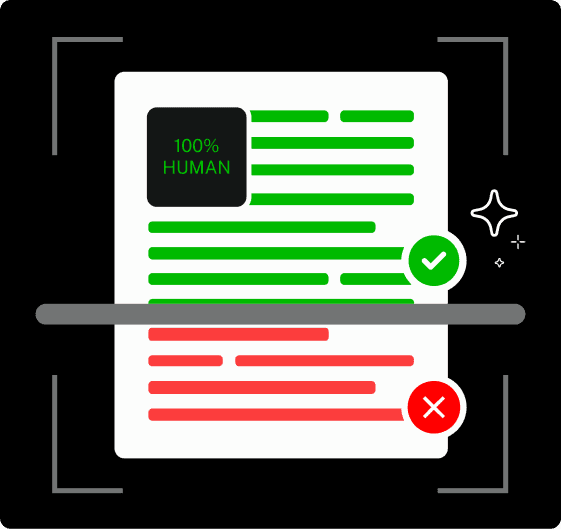
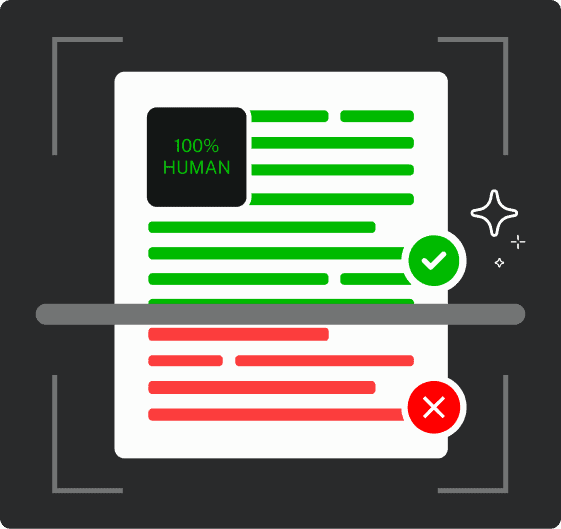
Never Worry About AI Detecting Your Texts Again. Undetectable AI Can Help You:
- Make your AI assisted writing appear human-like.
- Bypass all major AI detection tools with just one click.
- Use AI safely and confidently in school and work.
That said, certain formatting principles apply broadly across academic writing.
Essay format refers to how you structure and present your writing, including:
- Page layout (margins, spacing, indentation)
- Citation style (MLA, APA, Chicago)
- Organizational structure (introduction, body, conclusion)
- Stylistic elements (font choice, headings, title)
Think of format as your essay’s clothing. Just as you’d dress differently for a job interview versus a beach day, your essay’s format should match its purpose and audience.
Key Formatting Guidelines for College Essays
No matter what type of college essay you’re writing, certain formatting elements remain consistent:
- Clear paragraph structure with logical transitions
- Consistent citation format throughout
- 1-inch margins (standard in most word processors)
- Readable font in appropriate size (typically 11-12pt)
- Page numbers (typically in header or footer)
- Double-spacing (with exceptions for block quotes)
- Consistent heading style
These guidelines aren’t arbitrary. They’re designed to make your writing accessible and professional.
Following them signals to professors and admissions officers that you understand and respect academic conventions.
Differences Between Academic & Application Essays
Before diving deeper, let’s clarify an important distinction: academic essays and application essays serve different purposes and follow different rules.
Academic essays, such as research papers and analytical essays, require strict adherence to citation guidelines like MLA, APA, or Chicago.
They maintain an objective, scholarly tone, following a structured format that includes a clear thesis statement supported by evidence.
These essays prioritize critical thinking and knowledge demonstration, often concluding with a properly formatted works cited or reference page.
In contrast, application essays—including personal statements and supplemental essays—offer more flexibility.
They allow for a narrative voice, focusing on personal experiences and character rather than rigid structure.
While citations are rarely needed, the emphasis is on storytelling, self-reflection, and showcasing why an applicant is a good fit for an institution.
Formatting requirements are typically simpler, but clarity and authenticity remain key.
Understanding this distinction helps you select the right formatting approach.
A personal statement formatted like a research paper might come across as stilted, while an informal approach to your sociology analysis might seem unprofessional.
Basic Structure of a College Essay
Whether academic or personal, most college essays follow a simple four-part structure.
This structure isn’t a creative straitjacket but rather a proven framework that helps readers follow your thinking.
Let’s break it down.
1. Title (Optional but Recommended)
Even when not explicitly required, a thoughtful title serves multiple purposes:
- Captures reader interest immediately
- Gives a preview of your topic or approach
- Shows attention to detail and completeness
- Creates a professional first impression
Effective titles for academic essays are specific and descriptive: “Echoes of Colonialism in Achebe’s ‘Things Fall Apart'” rather than simply “Achebe Essay.”
For application essays, titles can be more creative but should still connect to your content: “Between Two Worlds: Navigating Cultural Identity” rather than “My College Essay.”
Avoid unnecessarily clever or cryptic titles that might confuse readers.
Your title should illuminate, not obscure, your content.
2. Introduction Paragraph
The introduction sets the stage for everything that follows.
A strong introduction accomplishes several goals:
- Hooks the reader with an engaging opening
- Provides necessary context for your topic
- Establishes your purpose or thesis statement
- Previews your essay’s structure
For academic essays, your introduction typically culminates in a thesis statement—a concise declaration of your central argument or perspective.
This acts as your essay’s North Star, guiding both writer and reader.
For application essays, the introduction often presents a scene, question, or personal insight that frames your narrative.
While you might not have a formal thesis, you should still have a clear purpose that drives your writing.
Regardless of essay type, avoid introductions that:
- State the obvious (“In this essay, I will discuss…”)
- Begin too broadly (“Since the beginning of time…”)
- Include irrelevant background information
- Make grandiose claims you can’t support
3. Body Paragraphs (2-3 Main Points)
The body paragraphs form your essay’s muscle, doing the heavy lifting of explanation, evidence, and analysis. Each paragraph should:
- Open with a clear topic sentence
- Develop a single main idea or point
- Include specific evidence or examples
- Connect explicitly to your thesis or purpose
- Transition smoothly to the next paragraph
For academic essays, each body paragraph typically examines a specific aspect of your argument, providing evidence and analysis to support your thesis.
Follow the “PEEL” structure: Point, Evidence, Explanation, Link.
Limit each paragraph to one main idea. When you shift to a new point, start a new paragraph. This creates visual breathing room and helps readers track your thinking.
4. Conclusion Paragraph
Many writers overlook the importance of an essay conclusion, which is a big mistake! This final paragraph is your last chance to leave a lasting impression.
A well-written conclusion doesn’t just repeat what’s been said, but it should rather synthesize key points, reinforce the thesis, and provide a satisfying sense of closure.
In academic essays, conclusions often explore broader implications, suggest applications, or highlight areas for further research.
They extend the discussion rather than simply summarizing it.
For application essays, conclusions circle back to the introduction’s theme with fresh insight, demonstrating personal growth or a deeper understanding.
A weak conclusion can undermine an otherwise strong essay.
Avoid introducing new arguments, abruptly cutting off, or qualifying your stance with weak phrases like “This is just my opinion.”
Instead, leave the reader with a thought-provoking takeaway that cements your essay’s impact.
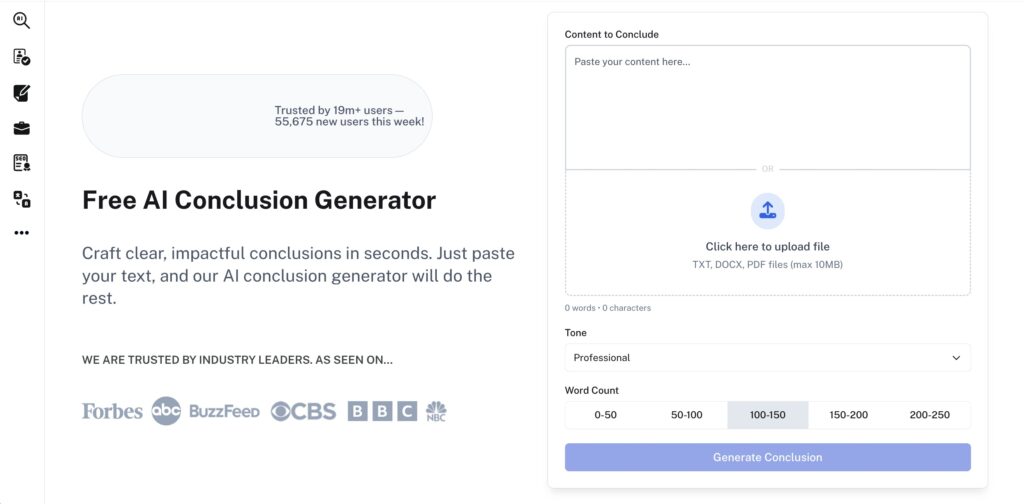
If crafting a strong, polished conclusion is something you tend to overthink, you’re not alone — it’s one of the hardest parts for most students.
That’s exactly why we built our AI Conclusion Generator. It’s designed to help you wrap up your essay with confidence, whether you’re reinforcing a thesis in an academic paper or closing your college application with a thoughtful reflection.
Just input your draft, and the tool generates a conclusion that feels purposeful, structured, and true to your voice — no clichés or generic summaries.
College Essay Format Guidelines (MLA, APA & General Rules)
While your essay’s content matters most, formatting details signal your professionalism and attention to detail.
Let’s explore the most common citation styles and general formatting rules.
1. MLA Format (Modern Language Association): MLA format is commonly used in humanities and literature courses. It follows a 12-pt Times New Roman font, double-spacing, and 1-inch margins throughout the document.
The header includes your last name and page number, while in-text citations follow the author-page format (e.g., Smith 23). The Works Cited page lists all references alphabetically, using a hanging indent.
2. APA Format (American Psychological Association): APA format is standard for social sciences, psychology, and education. It requires a title page, abstract, and headings for organization.
The font is 12-pt Times New Roman, with 1-inch margins and double spacing. In-text citations follow the author-date format (e.g., Smith, 2023), and sources are listed on a References page, formatted with a hanging indent.
3. Chicago Style (Chicago Manual of Style – CMS): Chicago style is often used in history and some social sciences. It offers two citation methods: the author-date system (like APA) or footnotes and a bibliography for more detailed referencing.
Chicago format typically includes a title page, numbered headings, and 1-inch margins.
General Formatting Rules for College Essays
Regardless of citation style, most college essays follow standard academic formatting:
- 12-pt Times New Roman font (or the specified typeface)
- Double-spacing for readability
- 1-inch margins on all sides
- Indented first lines of paragraphs (typically 0.5 inches)
- Consistent citation style throughout the essay
Always prioritize your professor’s or institution’s specific guidelines over general rules.
If instructions say to use single spacing despite the style guide recommending double spacing, follow your instructor’s directions.
How to Format a College Essay

Formatting your college essay correctly ensures clarity, professionalism, and adherence to academic standards.
Follow these steps to set up your document properly.
Step 1: Set Up Your Document
Open your word processor and adjust the margins to 1 inch. Select an appropriate font—typically 12-pt Times New Roman—and set the line spacing to double.
Enable automatic paragraph indentation at 0.5 inches to maintain consistency.
Step 2: Create Your Header
For MLA format, place your last name and page number in the upper right corner. In APA format, add a running head with a shortened title in the upper left and a page number in the upper right.
Application essays often don’t require headers unless specified by the institution.
Step 3: Add Title Information
Academic essays typically require your name, instructor’s name, course title, and date, positioned in the upper left and double-spaced.
For application essays, include your name and the essay prompt or title centered at the top of the page.
Step 4: Write Your Title
Center your title and use standard capitalization, ensuring major words are capitalized.
Avoid special formatting—no underlining, italics, or quotation marks unless citing a title within your own title.
Step 5: Format Your Citations
Choose the appropriate citation style based on your assignment’s requirements.
Maintain consistent formatting for in-text citations and ensure your Works Cited, References, or Bibliography page is properly formatted according to MLA, APA, or Chicago style.
Step 6: Finalize and Review
Check for consistent spacing throughout the document and confirm that page numbers appear correctly on all required pages.
Verify that in-text citations match the reference list and review any specific formatting requirements, such as a title page or abstract.
When in doubt, consult the official style guides or use your university’s writing center resources. Many schools offer free formatting guidance and templates.
How AI Can Help Format & Edit Your College Essay
AI tools can streamline the essay-writing process, ensuring your work is polished, properly formatted, and easy to read.
Undetectable AI’s AI Chat, AI Essay Writer and MLA Citation Generator provide powerful assistance to refine your essay while keeping your unique voice intact.
If you are closing an essay in MLA, try our MLA Citation Generator.
It does more than build a Works Cited page, it also helps you finalize MLA style conclusions that connect your sources back to your thesis and keep in text citations clear and consistent.
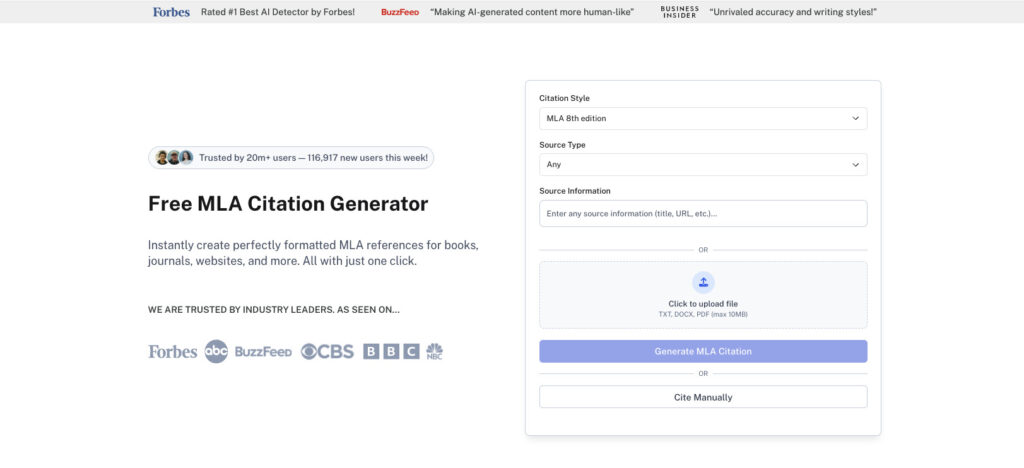
Enter your source details, then use the output to support a clean, confident closing that feels polished and MLA compliant.

Undetectable AI’s AI Chat provides real-time assistance with formatting questions, citation guidelines, and overall structure.
It helps ensure your essay follows MLA, APA, or Chicago style, keeping headings, margins, and references properly aligned.
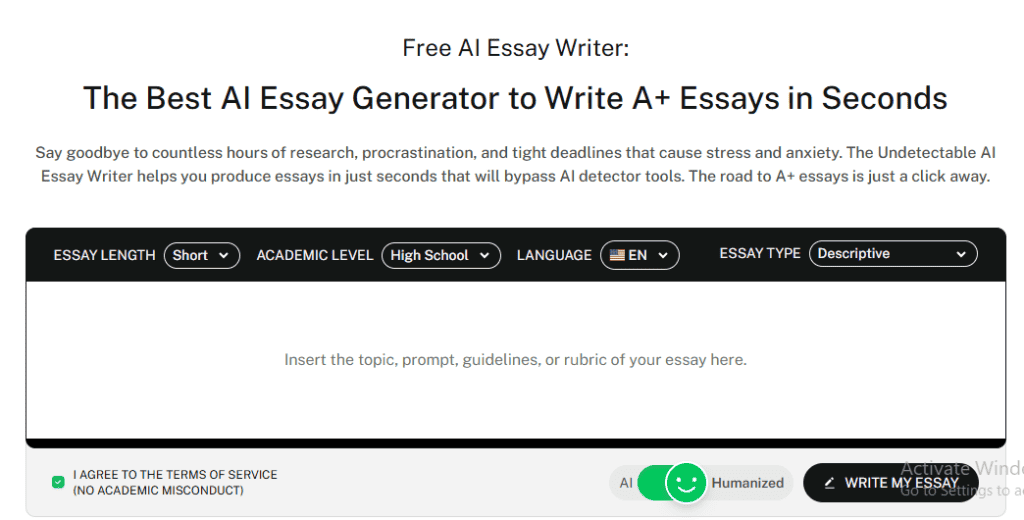
Using the AI Essay Writer is simple:
- Enter your topic, word count, and academic level.
- Select your essay type (descriptive, persuasive, analytical, etc.).
- Click “Write Essay” to generate a well-structured draft in seconds.
- Review, edit, and finalize to ensure clarity and originality.
Undetectable AI’s Essay Writer provides plagiarism-free, well-researched drafts and even helps bypass AI detection tools with human-like writing.
With a user-friendly interface and customizable parameters, you can quickly create essays that meet academic requirements without the stress.
Remember that AI tools should supplement, not replace, your understanding of proper formatting.
Use them to catch what you might miss, but develop your own knowledge of citation styles and formatting rules.
Don’t forget to also check out our AI Detector and Humanizer in the widget below!
FAQs About College Essay Formatting
What is the best format for a college essay?
The best format depends on the assignment. Academic essays follow citation styles like MLA, APA, or Chicago, while application essays use simple formatting (readable font, double-spacing, 1-inch margins).
Always follow your professor’s or application’s guidelines for clarity and accessibility.
Do college essays need a title?
Use professional, readable fonts like Times New Roman, Arial, Calibri, or Garamond. Stick to 11-12pt size and avoid decorative fonts that distract from your content.
Times New Roman (12pt) remains the safest choice for academic essays.
Should college essays be double-spaced?
Yes, double-spacing is standard for both academic and application essays, making them easier to read and edit.
Exceptions include block quotes (single-spaced, indented) and specific title page formats.
How long should a college essay be?
Essay length varies by type:
– Academic essays: 1,000-2,000 words for standard assignments, longer for research papers.
– Application essays: 650 words max for Common App personal statements, supplemental essays range from 100-650 words.
– Scholarship essays: Usually 500-1,000 words.
Always stay within the required word count and aim for the upper range if given a range (e.g., 1,000-1,200 words).
Margins Matter, But Your Ideas Matter More
As you develop your essay-writing skills, formatting will become second nature—something you do automatically without conscious effort.
Until then, keep this guide handy, follow assignment instructions carefully, and don’t hesitate to use campus writing resources for support.
The college essay journey isn’t about perfection from the start. It’s about continuous improvement, learning from feedback, and developing your unique voice within academic conventions.
The format provides the canvas—your ideas provide the art. For extra support, Undetectable AI ensures your essays are well-structured, grammatically sound, and properly formatted.
Whether you need real-time formatting guidance with AI Chat or structured drafts with the AI Essay Writer, these tools help you refine your writing effortlessly.
Try out AI tools today and simplify your essay-writing process!
